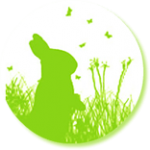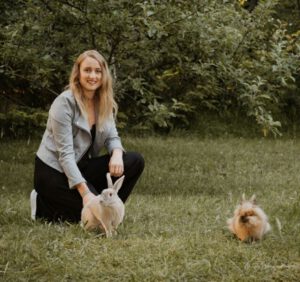Bone fractures are not uncommon in rabbits; they account for approximately 5% of veterinary consultations.

Why are rabbits prone to bone fractures?
Rabbits have a very delicate and fine-boned skeletal structure. The bones of a rabbit make up only about 6–7% of its body weight, whereas the bones of other pets—and humans—account for a much larger proportion. For example, a cat’s bones make up around 10% of its body weight. In addition, the risk of fractures is increased by the very thin and brittle cortical bone layer.
The long, curved spine is particularly susceptible to fractures, especially since rabbits are prey animals that tend to panic easily. When frightened, they may react with powerful escape movements (e.g., kicking with the hind legs or vigorous struggling), often injuring themselves in the process.
Contents
Causes: Preventing Bone Fractures
- Lifting and carrying rabbits should always be done with expertise and care! Incorrect handling is the most common cause of bone fractures. Falling from a person’s arms often results in broken bones. Children should not lift rabbits but instead interact with them by petting them on the ground.
- Fractures or dislocations frequently occur during restraint situations (e.g., during health checks, grooming, veterinary procedures, or rabbit shows).
- A classic spinal injury is a fracture of the cervical spine in young, growing rabbits, often caused by the use of the scruff hold by breeders. These rabbits may initially show no signs of injury, and the issue is sometimes found incidentally. However, even minor triggers (e.g., falls, chasing, handling) can cause acute symptoms, usually paralysis. Affected rabbits must be kept on a single level without platforms or the possibility of jumping.
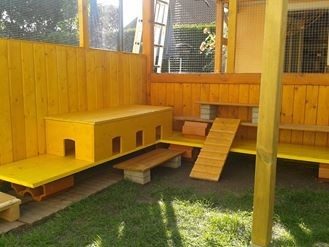
- Make sure the enclosure is completely predator-proof! Predator attacks are a common cause of bone fractures—not only due to direct injury but also due to self-inflicted trauma when rabbits panic and crash into wire mesh in small enclosures where they have no way to flee.
- Platforms should have protective edges or be designed to prevent falls of more than 50 cm (approx. 20 inches). Higher platforms should ideally be positioned so that rabbits fall onto a lower platform rather than all the way to the ground. There should always be both an ascent and descent option to prevent rabbits from being cornered and falling. Platforms should also be wide enough for at least two rabbits to pass each other comfortably.
- There are many hazards in the exercise area that can lead to accidents—such as getting caught in doors, falling out of windows or off balconies, or being stepped on accidentally.
- Be aware that there is a lot of animal-unfriendly equipment on the market that can cause fractures. Wire structures (e.g., cage tops, grates, hay racks) can become deadly traps or cause serious injuries. A common scenario is rabbits slipping between cage bars (e.g., door openings or hay racks) and injuring themselves while trying to escape in panic—often resulting in bone fractures. Leashes and harnesses also carry a risk of injury.
- A barrier of approximately 30 cm (about 12 inches) around the enclosure can prevent rabbits from crashing into the mesh during panic situations.
- At the vet, mouth gags must never be used on awake rabbits! This frequently causes fractures of the jaw joint.
- Lastly, neoplasms (bone tumors) can also be a cause of bone fractures.
Symptoms: Recognizing Bone Fractures
Does the animal have an abnormal gait, limbs that appear to be positioned differently or hanging limply? Is the rabbit using its limbs differently than usual or avoiding putting weight on them? Is it unable to chew (possible jaw fracture)? Has the rabbit sustained serious injuries from accidents, predator attacks, or similar incidents?
All of these signs—and more—can be indicators of a bone fracture!
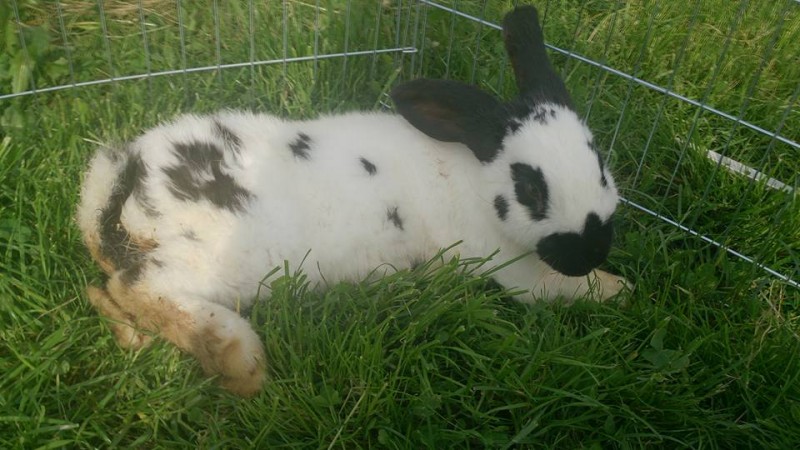
First Aid
For rabbits showing severe symptoms, try to place them into a transport box as gently as possible—ideally by encouraging the rabbit to enter on its own, or by carefully stabilizing it from the sides with towels and lifting it in its current position without excessive movement. Inside the box, the rabbit’s movement should be restricted to prevent it from being tossed around during the car ride. To do this, roll a towel or carpet around a bottle (e.g., a filled 1.5L plastic bottle) and place it alongside the rabbit.
Transport boxes with grated tops can be covered with a towel to help calm rabbits that are in shock.
In the case of active bleeding, emergency vets can provide phone guidance on how to stop the bleeding and how to position the rabbit (e.g., apply a compression bandage, keep the head low). Open wounds and exposed bones should be covered with a freshly washed, damp towel to prevent further contamination.
Emergency services should be contacted in the event of an accident, acute injury, or predator attack, as well as if the animal is having difficulty moving, showing signs of pain, or displaying other unusual behaviors (e.g., not eating or eating very little). When in doubt, don’t hesitate to call the emergency vet for advice!
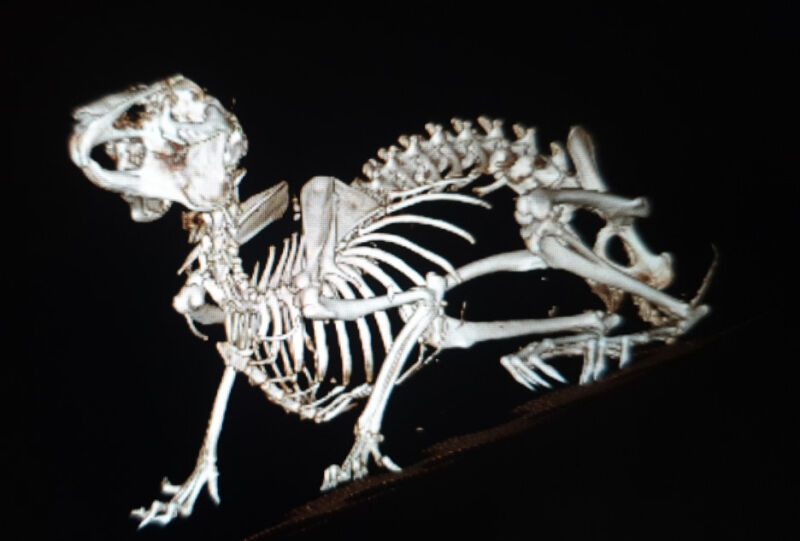
Diagnosis: Is it a Bone Fracture?
The veterinarian will first conduct a thorough general and, if necessary, neurological examination to get an overview of the condition. For example, it will be checked whether the rabbit is in shock and how severe the injury is. Depending on the findings, further tests may be necessary:
- X-rays of the spine and affected limbs or the relevant area should always be taken from multiple angles. If there are any signs of respiratory issues, the chest should also be X-rayed.
- If no cause is identified on the X-ray, or if a spinal injury is suspected, a CT scan may be useful to detect finer injuries (particularly to the spine and spinal cord). Spinal cord injuries can be evaluated with an MRI.
- In some cases, ultrasound may be needed to assess the extent of the injuries more accurately.
- If the veterinarian suspects a neurological issue, the rabbit may be referred to a neurologist.
- Blood tests may also be required (e.g., EC double titer in cases of neurological symptoms, hematocrit, kidney and liver parameters, and total protein levels in cases of shock).

Treatment: Treating Bone Fractures
Some rabbits may require shock treatment and intravenous fluid therapy (electrolyte solution). In some cases, oxygen therapy and intensive care may be necessary. The rabbit’s digestion and food intake should be closely monitored during treatment.
The treatment of bone fractures depends on the type of fracture, which is why it is usually necessary for an experienced orthopedic surgeon (specialization in rabbits is not required) to assess the fracture!
- Some fractures can heal conservatively without surgery (especially fractures in the toe area, closed fractures with no damage to surrounding tissue, and those that are well aligned). In these cases, the fracture is stabilized with a splint and bandage. The rabbit is kept in a small cage without furnishings for a few weeks. To help it feel secure, the top of the cage is covered with a wooden board or carpet. Regular check-ups are required.
- In the case of open fractures (where the skin is torn and the bone is exposed), fractures involving joints or those near a joint, or fractures under high stress, surgical treatment is necessary. Realigning the bone into its original position is rarely successful, and other techniques are usually required. The surgeon will advise on the appropriate course of action.

- In some cases, the limb cannot be saved through surgery (e.g., due to bone tumors, wound healing issues/infections, complex fractures, etc.). In such cases, amputation (removal of the limb) may be necessary. Healthy, not too old rabbits usually adapt very well to life with three legs. However, older or sicker rabbits may have more difficulty coping with an amputation of a hind limb, or they may not fully recover. The risk of complications increases slightly for rabbits over 2 kg in weight, and large, overweight rabbits often do not recover fully or take significantly longer, requiring more support to adjust to walking on three legs. The front limbs bear less pressure than the hind limbs. However, as a result of the altered posture after amputation, arthritis and sores on the remaining limbs due to excessive strain are typically seen.
- Elbow luxations are treated by relocating the joint. Afterward, the rabbit must wear a supportive bandage. If the joint dislocates again, surgery may be necessary.
- In the case of hip luxations, simply relocating the bone into the joint and stabilizing it with a bandage is not sufficient, as the bone often pops out again (the ligamentum capitis femoris is often torn). A reduction and fixation of the bone under sedation using an Ehmer sling provides stability and increases the chances of success. However, reluxation may occur. Fixation using nylon sutures in the joint is also possible. If this is not successful, surgery to remove the head of the femur (femoral head ostectomy) may be performed.
- Spinal cord injuries without bone involvement can be treated conservatively without surgery (infusions, pain medication, Vitamin B complex, physical therapy, monitoring urination and defecation, and in some cases, a urinary catheter may be required). Careful handling is essential!
- In the case of a vertebral fracture or luxation, a skilled surgeon should be consulted. Surgical treatment, similar to that used in dogs and cats, is possible.
- If the spinal cord is completely severed, unfortunately, the animal can only be euthanized, as treatment is not possible.
- Intervertebral disc herniations can sometimes be treated surgically, but in many cases, conservative treatment is also possible (effective pain management, Vitamin B complex, physical therapy, etc.).
- Jaw fractures can often heal on their own, depending on the type of fracture, if strong painkillers are administered and the rabbit is fed a soft diet (such as soaked Cuni Complete).
Some rabbits require additional measures, such as physical therapy.
The administration of Vitamin D supports bone healing.
Is the leg beyond saving? Don’t be afraid of amputations!
Care: Medication, Enclosure Adjustment, Positioning…

Housing
Rabbits with bone fractures need to be kept calm. The rabbit should be placed in a small cage without furnishings for a few weeks. To help it feel secure, the top of the cage can be covered with a wooden board or carpet. Access to companions can be provided through chip cat flaps or a larger barrier (depending on the mobility of the injured rabbit, e.g., a board that healthy rabbits can pass over). Initial contact with other rabbits should only occur under supervision until the behavior of the companions can be assessed. When absent, contact through the bars is possible. Later, loving companion animals can have free access.
Warning: If there is impaired bladder function and paralysis, rabbits may urinate on themselves! A disturbance in the cecotrope intake can also be problematic. All of this quickly attracts fly larvae, which can lead to a cruel death. Affected rabbits must be protected with fly netting and spot-on treatments!
Medication Administration
In addition to excellent pain management (ideally a combination of several medications), some rabbits may also require antibiotic treatment after surgery.

- The antibiotic must be bone-penetrating (e.g., Enrofloxacin), and the PLACE rule should be followed, as many orthopedic surgeons are not familiar with rabbits (do not administer orally in rabbits, and inject only in special cases: Penicillin, Lincomycin, Amoxicillin, Ampicillin, Clindamycin, Cephalosporins, Erythromycin).
To minimize stress for the rabbits, medications should preferably be administered via treats. See medication administration guidelines. The medicated food can be placed on a small plate in front of the rabbit, and other rabbits should be excluded until the food is consumed.
Positioning
Rabbits that are unable to move sufficiently on their own need to be repositioned multiple times a day and should be kept on Vetbeds (with absorbent material underneath, such as wood pellets). See positioning of paralyzed rabbits.
Enclosure and Housing Adjustments
- For some rabbits, even after healing, it is necessary to adjust the enclosure to prevent issues such as high jumps (which strain the joints – leading to arthritis!), sores on the paws, and falls.
- Securing Levels (Walls + Ramps/Accesses, so that the rabbits cannot jump high)
If necessary, the substrate should be changed to prevent pododermatitis in excessively stressed limbs (ideally hay on a thick layer of bedding, dog mats, etc.; see pododermatitis).
- For some rabbits, a non-slip surface is essential (carpets, thick bedding, grass, etc.).
Possible adjustment of the group (separation with a calm, loving companion animal if the rabbit does not cope well in a larger group).
- Rabbits with amputations require assistance with grooming. If a hind limb is missing, the ears cannot be cleaned adequately – ear care is necessary. In the case of front limb amputations, facial cleaning is often more difficult.

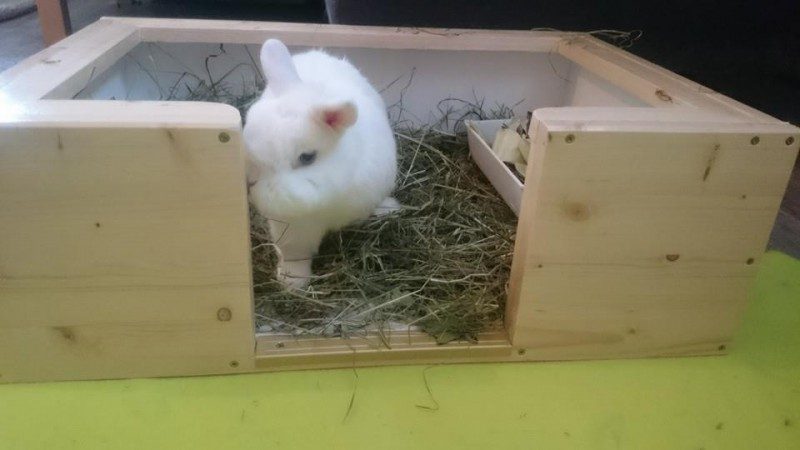

Case Report: Fiene
In May 2020, Fiene broke her foot in an accident. We fought for about a month after the amputation with medications, bandage changes, separating the rabbit pair, socialization, and much more. Today, she has been living as a three-legged rabbit for nearly four years, and we are happy that we took this tough journey. But Fiene shows us every day that it was worth it.



3 months after the amputation
Broken toes on the hind leg. The front part of the toe had to be amputated, but the healing went really well and was relatively quick.

Case Report with Misdiagnosis
Here, a veterinarian who was not specialized in bone fractures mistakenly recommended that the leg heal without surgery. Unfortunately, this led to less-than-optimal results.

Sources include:
Ertelt, J., Maierl, J., Kaiser, A., & Matis, U. (2010): Untersuchungen zur Anatomie, Pathophysiologie und Therapie der Luxatio antebrachii beim Kaninchen. Tierärztliche Praxis Ausgabe K: Kleintiere/Heimtiere, 38(04), 201-210.
Fehr, M., Thomas, M., Baur, S., & Köstlinger, S. (2011): Frakturen und Luxationen beim Kleinsäuger. Tierärztliche Praxis Ausgabe K: Kleintiere/Heimtiere, 39(05), 343-352.
Gallego, M., & Villaluenga, J. E. (2019): Coxofemoral luxation in pet rabbits: nine cases. Journal of Small Animal Practice, 60(10), 631-635.
Guillier D, Decambron A, Desprez I, Pignon C, Donnelly TM. (2020): Patellar luxation in rabbits (Oryctolagus cuniculus): 6 cases (2017 – 2020). I Exotic Pet Med
Hetterich, J., Joos, D., Beyerbach, M., Cigler, P., Hackenbroich, C., Hatt, J. M., … & Reuschel, M. (2023): Treatment options, complications and long‐term outcomes for limb fractures in pet rabbits. Veterinary Record, 192(3)
Langenecker, M., Clauss, M., Hässig, M., & Hatt, J. M. (2009): Vergleichende Untersuchung zur Krankheitsverteilung bei Kaninchen, Meerschweinchen, Ratten und Frettchen. Tierärztliche Praxis Ausgabe K: Kleintiere/Heimtiere, 37(05), 326-333.
Miwa, Y., & Carrasco, D. C. (2019): Exotic mammal orthopedics. Veterinary Clinics: Exotic Animal Practice, 22(2), 175-210.
Lübke, C., & Köstlinger, S. (2015): Frakturversorgung beim Kaninchen. kleintier konkret, 18(S 01), 12-17.
Quesenberry, K. E., & Carpenter, J. W. (1997): Ferrets, rabbits and rodents (pp. 77-91). Elsevier.
Sasai, H., Fujita, D., Tagami, Y., Seto, E., Denda, Y., Hamakita, H., … & Yamate, J. (2015): Characteristics of bone fractures and usefulness of micro–computed tomography for fracture detection in rabbits: 210 cases (2007–2013). Journal of the American Veterinary Medical Association, 246(12), 1339-1344.
